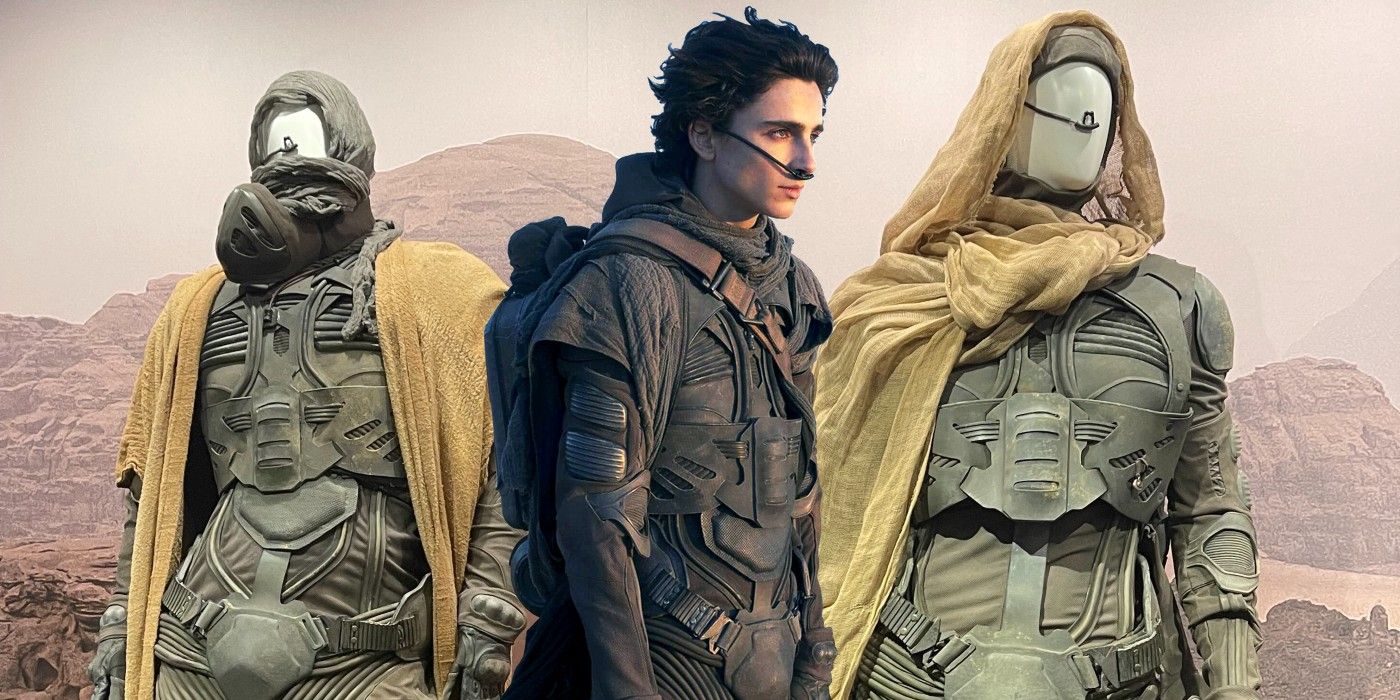The costume designers of Dune created around 1,000 pieces for part one of the sci-fi epic. Based on the 1965 novel of the same name by Frank Herbert, part one of the Dennis Villeneuve-directed movie is an adaption of more or less the first half of the book. Dune was released internationally on September 15th and is set for a simultaneous release in theaters and HBO Max on October 22nd.
Dune stars Timothee Chalamet as Paul Atreides, the heir to the throne on a distant planet led by his father Duke Leto (Oscar Isaac) and Lady Jessica (Rebecca Ferguson). Chalamet is supported by a star-studded ensemble cast including Josh Brolin, Dave Bautista, Zendaya, Jason Momoa, and several others. Dune finds its heroes in the far future on the desert planet Arrakis, tasked with mining for a drug with body-enhancing properties that is guarded by giant sandworms. Harsh betrayals and questioned loyalties complicate their mission and find the young prince seeking help from Arrakis native, Chani (Zendaya). In addition to Arrakis, Dune spans across two other planets as well.
Dune costume designers, Jacqueline West (The Curious Case of Benjamin Button, The Revenant) and Bob Morgan (Maleficent: Mistress of Evil, Inception), told Variety (via IndieWire) they created “1,000 or so looks” to encompass the variety of costumes across these worlds. Their inspiration came from all over, including David Lean films (Lawrence of Arabia, Fahrenheit 451), Greek and Roman mythology, the works of Francisco Goya, Giotto, the clothes of desert dwellers like the Bedouins, and even classic fashion brands like Balenciaga. Herbert describes these looks in the novel in great detail, and these costumes needed to vary greatly between the three worlds of Arrakis, Caladan, and Giedi Prime. On Arrakis, the characters needed to wear “stillsuits” that were molded carefully to each actor’s body. For this, West consulted Black Panther and The Batman concept artist Keith Christensen. Read West's quote below:
“Each one had to be cut on a mold of the actors’ bodies because the movement of the body is what theoretically activates the stillsuit and turns it into a distillery. [Both in the book and film, the suits take human wastewater and turn it into a gas,] and then that filters through all of the tubing in the suit as a coolant with gauges and regulators. And we put all that on the stillsuits.”
Each world of the movie has a different color scheme. The looks were chromatic, with the stillsuit remaining grey as it is in the novel. Other looks were inspired by the locations. West based the outfits of Arrakis on the coral, rose, peach, and beige colors of the rocks in Jordan, where filming for the Arrakis scenes took place. Villeneuve was heavily involved in what became a collaborative process as he would often check in on early designs in the costume shops.
The costumes are already receiving buzz as Oscar contenders, which would be the fourth nomination for West. Based on West and Morgan's description of the intense work they did on the costumes, an Oscar win would not be surprising. It's certainly interesting to hear details on the process and inspirations behind creating what Herbert described in the novel. The costumes can finally be seen in all their glory when Dune releases next month.
Source: IndieWire



